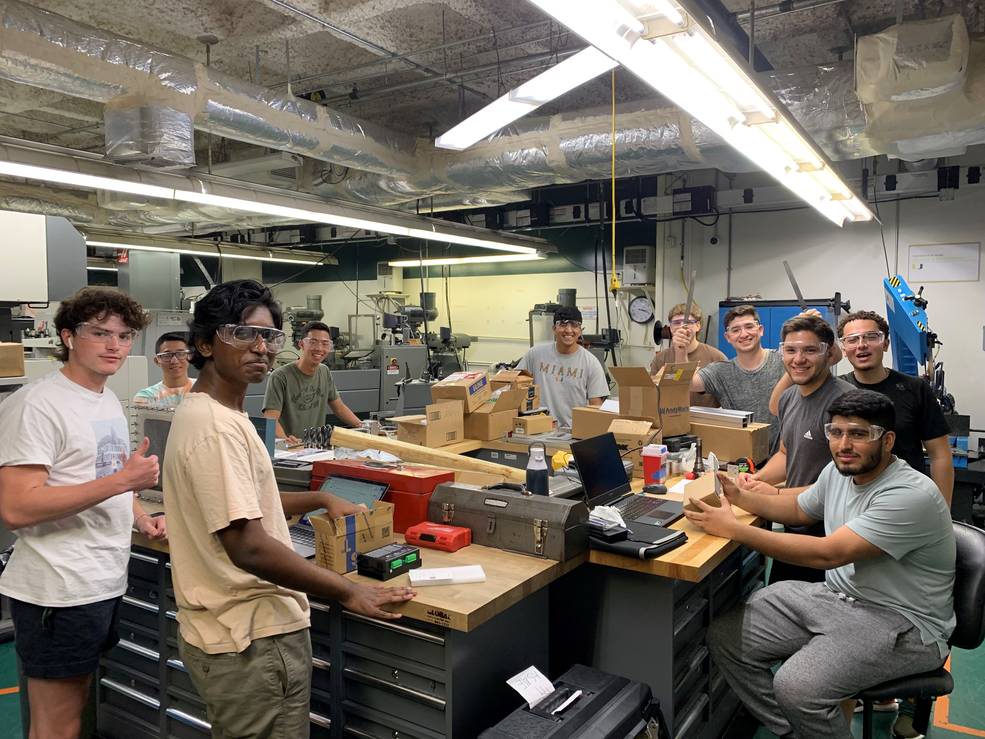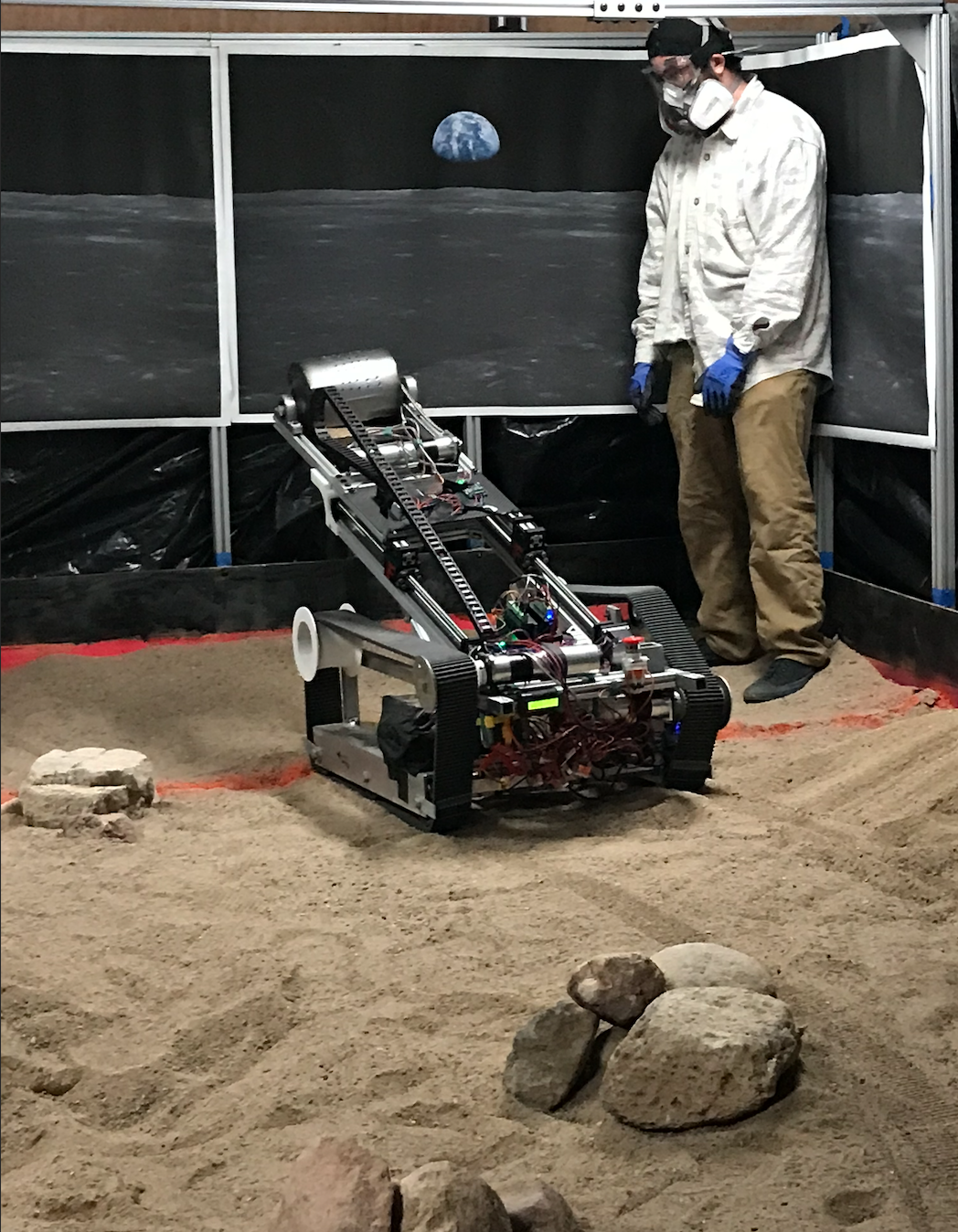For more than 10 years, NASA’s Lunabotics competition has been challenging collegiate teams to design and build a protype lunar robot capable of demonstrating the technologies necessary for long-term human presence on the Moon and other off-world locations.
This year, Iowa State University and its Cardinal Space Mining Club was the top winner of NASA’s 2023 Lunabotics competition, receiving the grand prize overall during a virtual ceremony on May 31. San Diego University’s team Vulcan, in only its second year in the competition, received first runner up overall, while the University of North Dakota’s team UND RAPTOR Robotics received second runner up overall. More than 40 teams from 26 states and one commonwealth participated in the virtual competition that took place this year.
“More than five decades after NASA landed a man on the Moon and returned him safely to Earth, Kennedy Space Center is still igniting space exploration and discovery for all,” said Kelvin Manning, Kennedy’s deputy director. “And those same principles that push us to inspire the world through discovery have sustained you through the course of this competition.”

For this year’s competition, more than 600 students and their faculty advisors completed the required milestones, including a project management plan, systems engineering paper, public outreach report, and an optional presentation and demonstration. All participating teams designed, fabricated, assembled, and operated a Lunabot, and provided a video of the robotic miner in action.
Along with all the other milestones, Lunabotics teams planned and executed some creative outreach projects to reach middle- and high-school students and encouraged them to study STEM and pursue careers in science, technology, engineering and math.
University of Miami’s public outreach efforts earned them second place in the Public Outreach Project Report category. The team focused on sharing their enthusiasm for Lunabotics with students at Sunset Miami High School, where they mentored 25 students and helped them build and code their own miniature lunar mining robots.
This was the second year of participation for New Mexico Tech. The team reached a total of 250 students, first by developing a LEGO mindstorm hardware and software structure based on LEGO building blocks and conducting a hill-climbing workshop and challenge. The team also demonstrated their Miner 49ers robot during the tournament to excite students about STEM.
“As part of this campus event, students from 18 middle and high schools came to our campus and competed in parallel with college teams from across the southwest,” said Curtis O’Malley, the team’s advisor.
University of North Dakota has competed in every Lunabotics competition since the challenge’s inception in 2010, and this year, the team gave an interactive presentation on NASA’s Artemis mission, robotics, and STEM to students at Valley Middle School. The goal of the event was to encourage students to start a FIRST (For the Inspiration and Recognition of Science and Technology) LEGO league team.
“We taught the students how to code mindstorm robots to navigate through a maze,” said team member Matthew Boston. “The students experimented with various sensors on the robot to aid them in navigating through the maze.”
Not only does this challenge educate students on the systems engineering process, it benefits NASA by providing valuable data about necessary excavation hardware and surface locomotion processes that can be implemented in preparation for the agency’s return to the Moon through the Artemis program. Participants in next year’s Lunabotics competition can expect changes in the challenge requirements, as the competition evolves to more closely align with future Artemis goals.
“There is a technology gap from what we can do now to what we need to do to establish a permanent presence on the lunar surface. One of those first steps is to build berms around the lunar launch and landing sites,” said Rich Johanboeke, Lunabotics project manager in NASA’s Office of STEM Engagement at the agency’s Kennedy Space Center in Florida. “Next year’s competition will shift from focusing on lunar mining to lunar construction.”
One of NASA’s goals is to encourage students to pursue education and careers in STEM fields. NASA’s Office of STEM Engagement manages the Minority University Research and Education Project (MUREP). MUREP engages underrepresented populations through a wide variety of activities and initiatives, including the Lunabotics competition.
Of the teams competing this year, 12 were Minority Serving Institutions (MSIs).
They were Oakton Community College in Illinois, Virginia Polytechnic Institute and State University, California State University Long Beach-Science Learning Center, San Diego State University, Virginia State University, two teams from Florida International University, Inter American University of Puerto Rico-Bayamon, New Mexico Institute of Mining and Technology, Texas A&M International University, The University of Tennessee-Knoxville, and University of Massachusetts-Amherst.
For more information about NASA’s STEM engagement, visit Explore NASA STEM | NASA.
Winners List
Grand Prize
Iowa State University
Grand Prize – 1st Runner Up
San Diego State University
Grand Prize – 2nd Runner Up
University of North Dakota
Systems Engineering Paper
First Place – Iowa State University
Second Place – University of Utah
Third Place – College of DuPage
Leaps and Bounds Award
University of Nebraska – Lincoln
Public Outreach Project Report
First Place – University of Nebraska – Lincoln
Second Place – University of Miami
Third Place – University of Illinois
Presentation and Demonstration
First Place – Iowa State University
Second Place – California State University, Long Beach – Science Learning Center
Third Place – San Diego State University
Honorable Mention – Purdue University – Main Campus
Proof of Life Video
First Place – San Diego State University
Second Place – Iowa State University
Third Place – University of North Dakota
Innovation Award
Marquette University



























